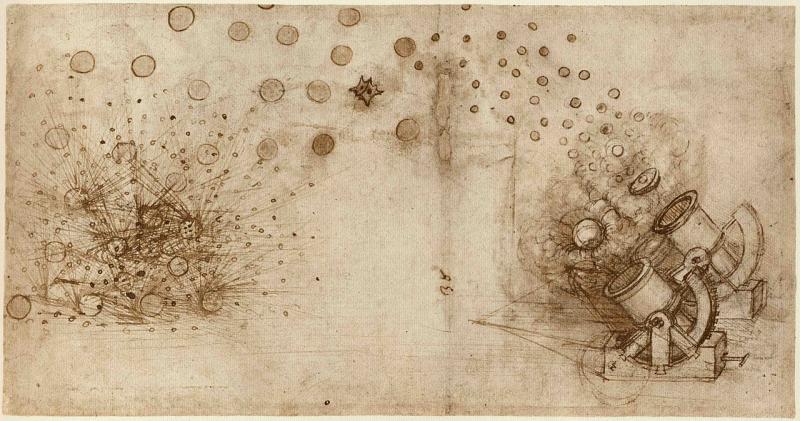The Story Behind Leonardo’s Codex Atlanticus
ITA:

Use player to listen to Italian version
The Codex Atlanticus is the largest collection of writings and drawings by Leonardo, preserved since 1637 at the Biblioteca Ambrosiana in Milan. It consists of 1119 sheets, most of them drawn or written on both sides. It covers about 40 years of Leonardo’s activity, with the first note dating from 1478, when he was still living in his native Tuscany, and the last from 1519, the year of his death.
The Codex Atlanticus was not put together by Leonardo himself, but by Milanese sculptor Pompeo Leoni at the end of the 16th century. Leoni recovered a good number of Leonardo's papers from the heirs of Francesco Melzi, the pupil who had received all of Leonardo’s writings as inheritance after his master’s death. From the papers, Leoni created two large volumes, one is the Codex Atlanticus, the other is the Windsor collection.
The Codex Atlanticus contains sketches and preparatory drawings for paintings, notes about math, astronomy and optics, philosophical reflections, sketches of pioneer engineering projects, Leonardo's studies on the flight of birds, and even recipes for cooking dishes!
Why the adjective Atlanticus? Because of its size: Leonardo's papers were pasted on sheets of the same large format used for geographic atlases.
And how did it end in the Biblioteca Ambrosiana? Well, in the 17th century, the Biblioteca Ambrosiana in Milan was one of the most prestigious libraries in Europe, with a vast collection of books, open to anyone who could read and write. Many of the manuscripts in the collection, including the Codex Atlanticus, were donated by Milanese nobleman Marquis Galeazzo Arconati, who had acquired Leonardo’s papers and, by donating them, made sure this treasure would be preserved and accessible to future generations.
Il Codice Atlantico è la più grande raccolta di scritti e disegni di Leonardo, conservata dal 1637 presso la Biblioteca Ambrosiana di Milano. Consiste di 1119 documenti, la maggior parte dei quali disegnati o scritti su entrambi i lati. Copre circa 40 anni di attività di Leonardo, con il primo appunto risalente al 1478, quando viveva ancora nella natia Toscana, e l'ultimo al 1519, anno della sua morte.
Il Codice Atlantico non fu assemblato da Leonardo, ma dallo scultore milanese Pompeo Leoni alla fine del XVI secolo. Leoni recuperò un buon numero di fogli di Leonardo dagli eredi di Francesco Melzi, l'allievo che aveva ricevuto tutti gli scritti di Leonardo in eredità dopo la morte del maestro. Da queste carte, Leoni creò due grandi volumi, uno è il Codice Atlantico, l'altro è la collezione Windsor.
Il Codice Atlantico contiene schizzi e disegni preparatori per dipinti, appunti su matematica, astronomia e ottica, riflessioni filosofiche, bozzetti di progetti ingegneristici pionieristici, studi di Leonardo sul volo degli uccelli e persino ricette di cucina!
Perché l'aggettivo Atlantico? Per le sue dimensioni: i manoscritti di Leonardo furono incollati su fogli dello stesso grande formato utilizzato per gli atlanti geografici.
E come è finito il codice nella Biblioteca Ambrosiana? Nel XVII° secolo, la Biblioteca Ambrosiana di Milano era una delle biblioteche più prestigiose d'Europa, con una vasta collezione di libri, aperta a chiunque fosse in grado di leggere e di scrivere. Molti dei volumi della collezione, incluso il Codice Atlantico, furono donati dal marchese milanese Galeazzo Arconati, che aveva acquisito le carte di Leonardo e, nel donarle, volle assicurarsi che questo tesoro fosse preservato e accessibile alle generazioni future.











